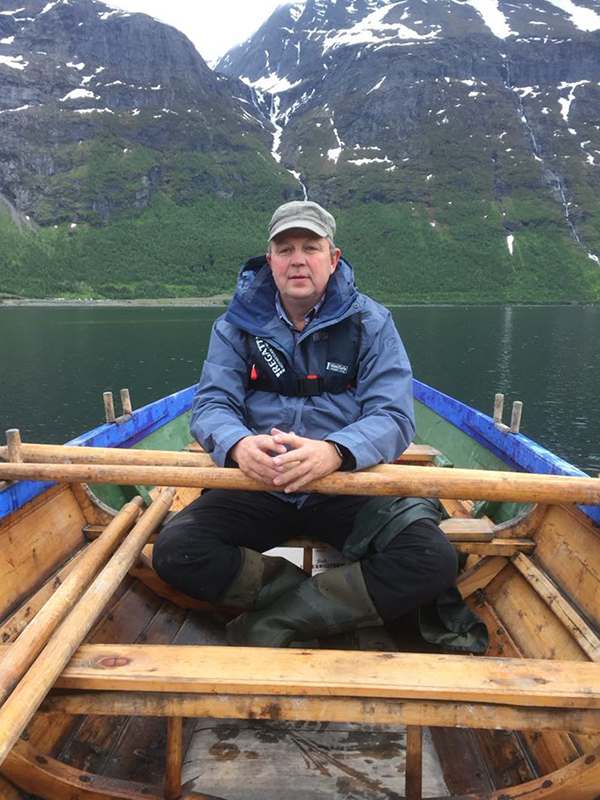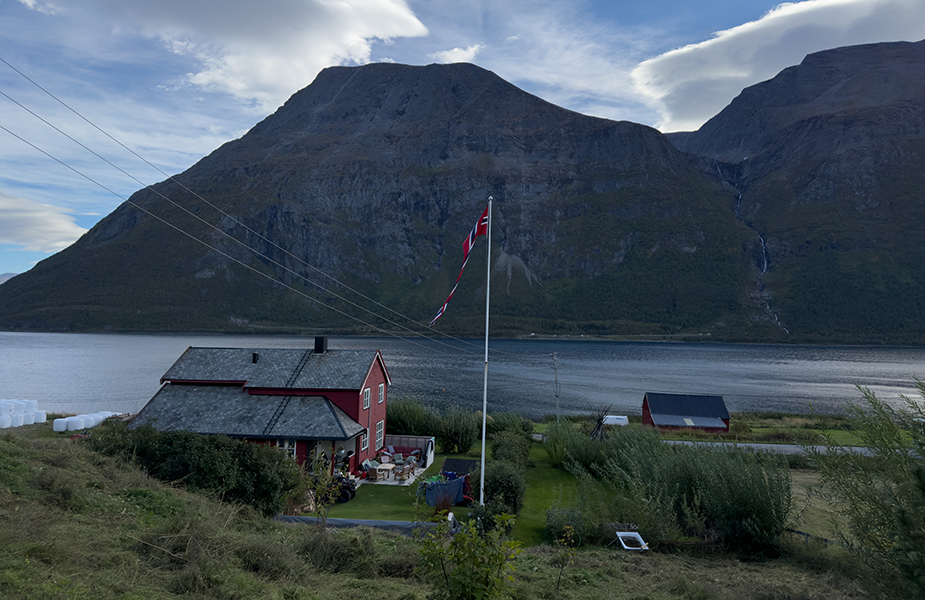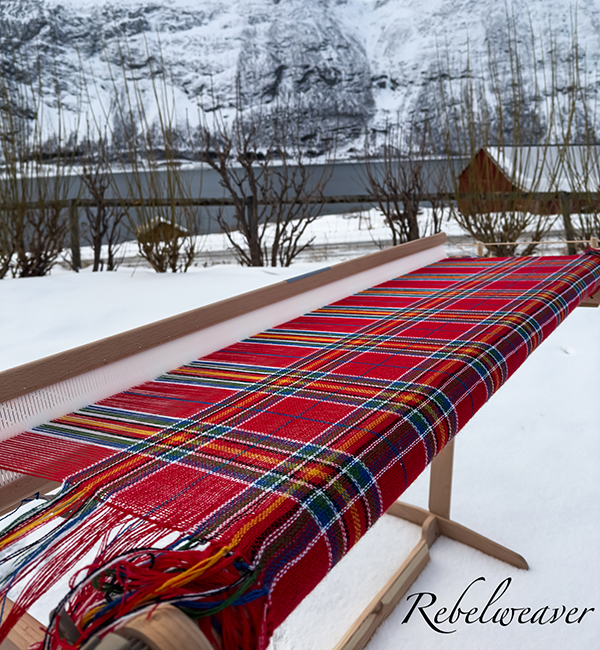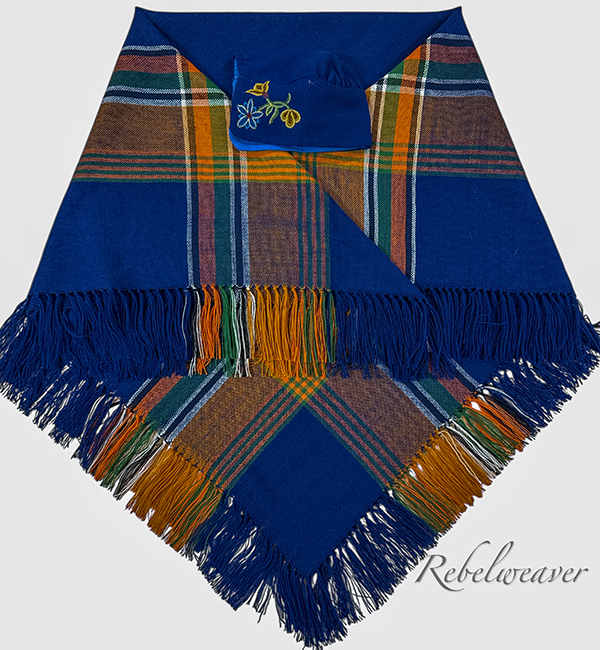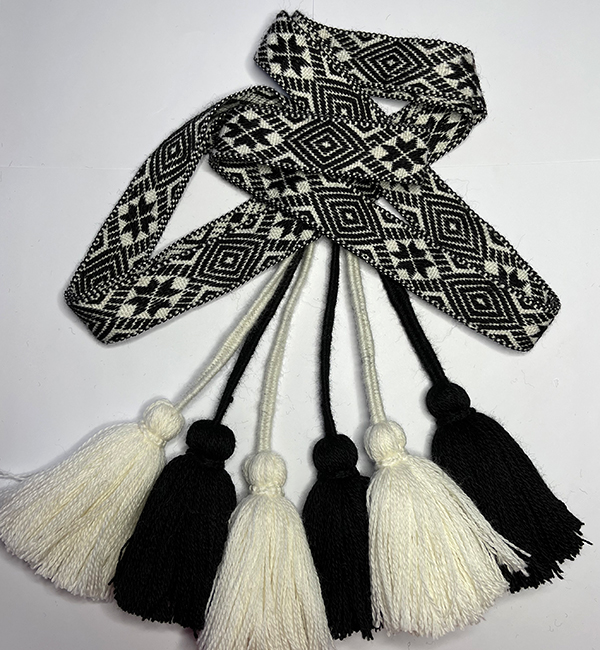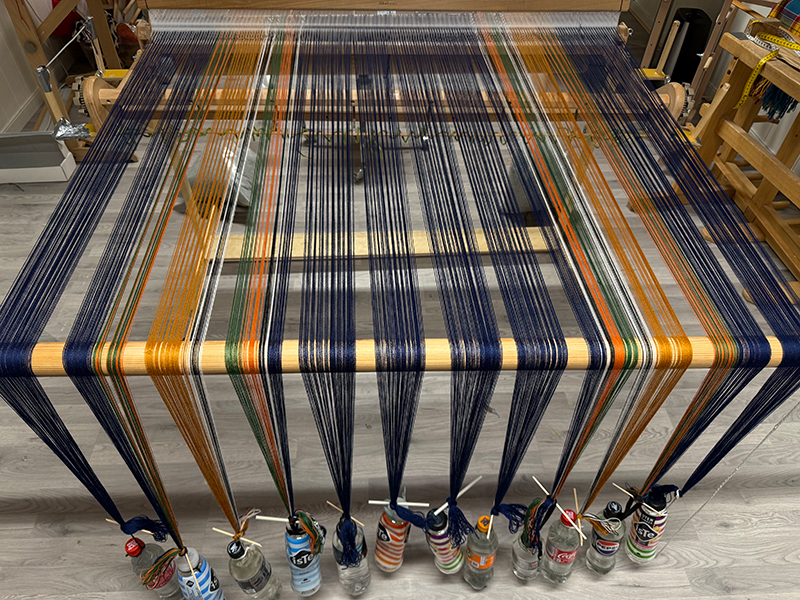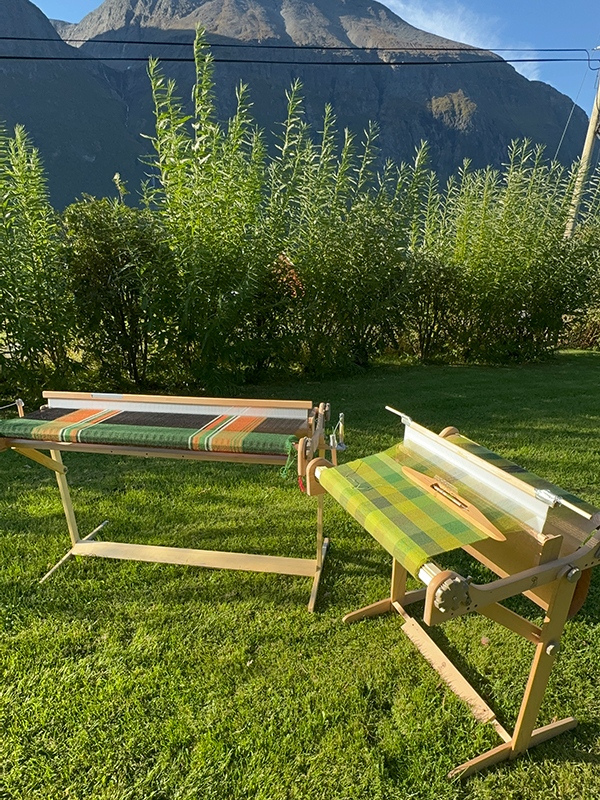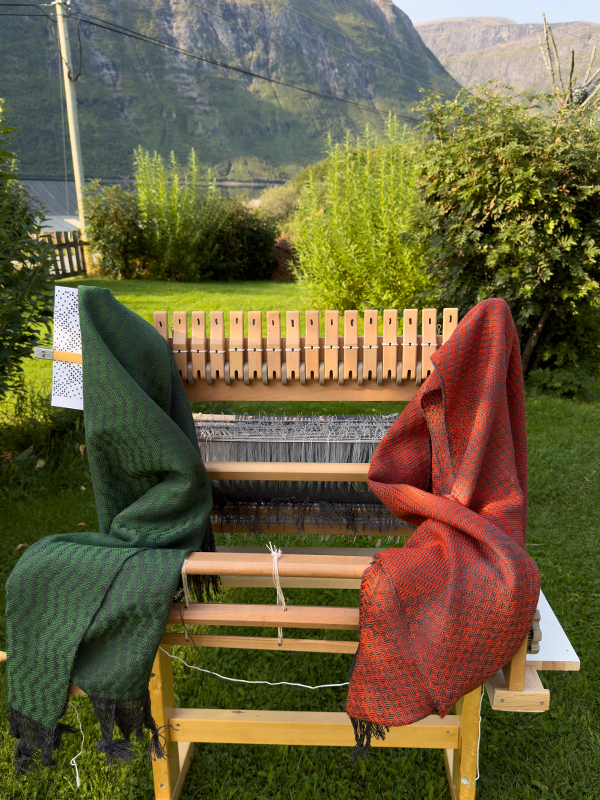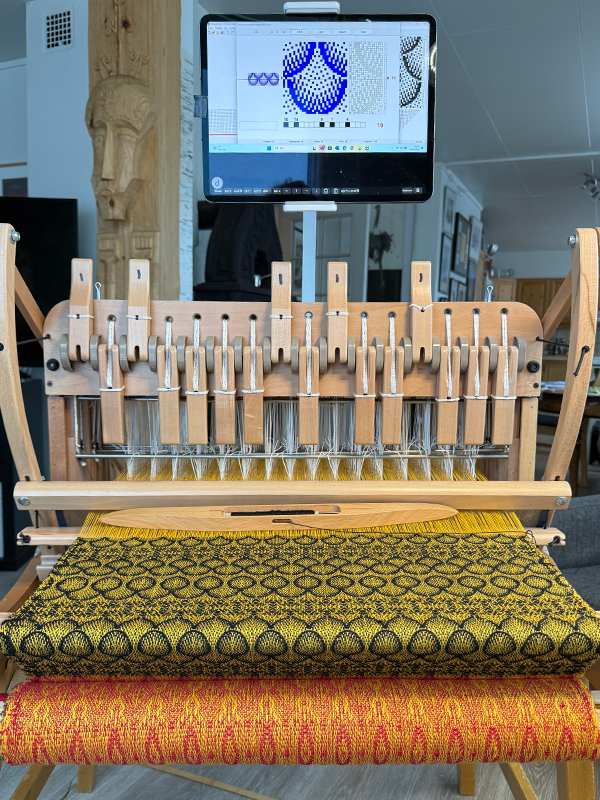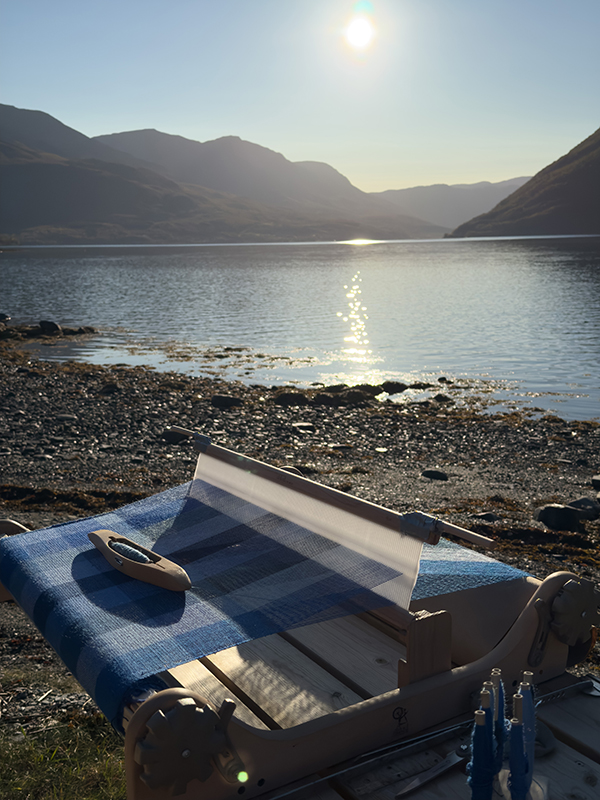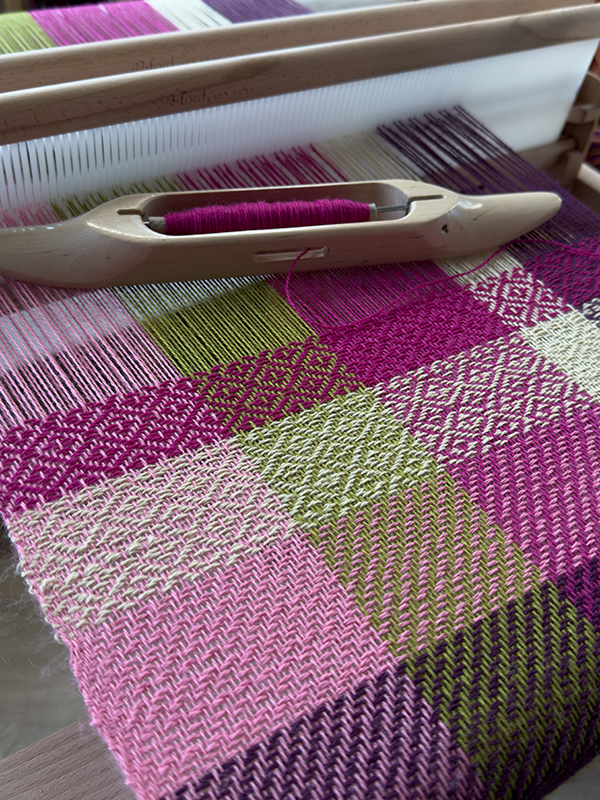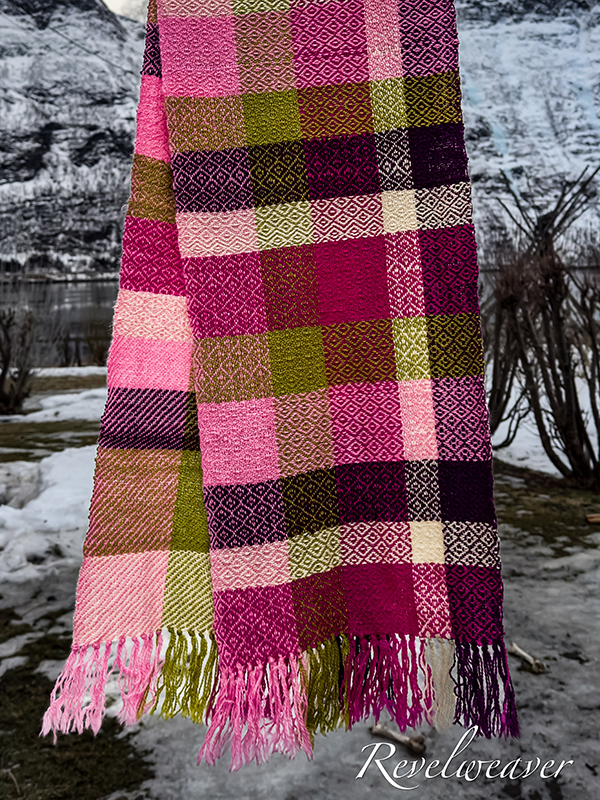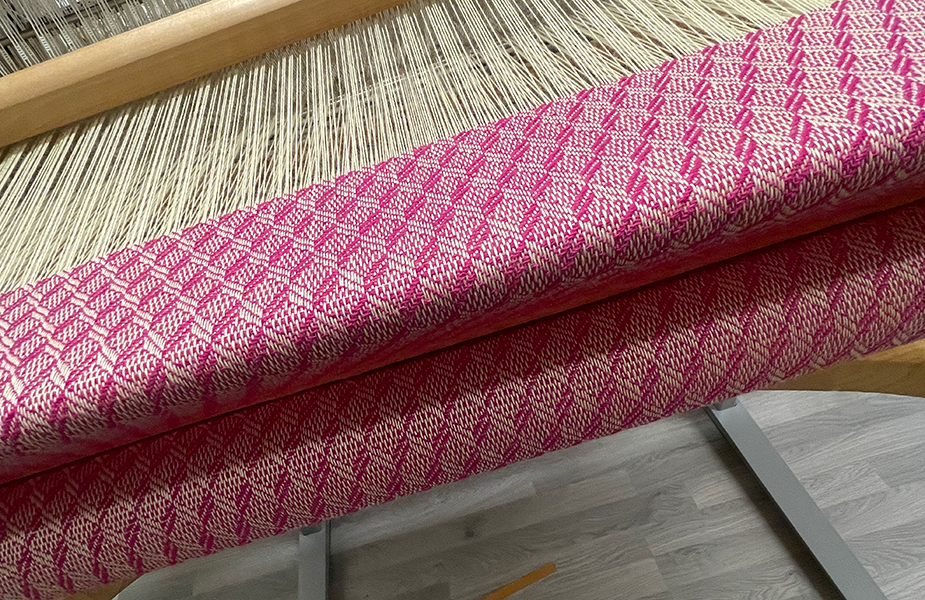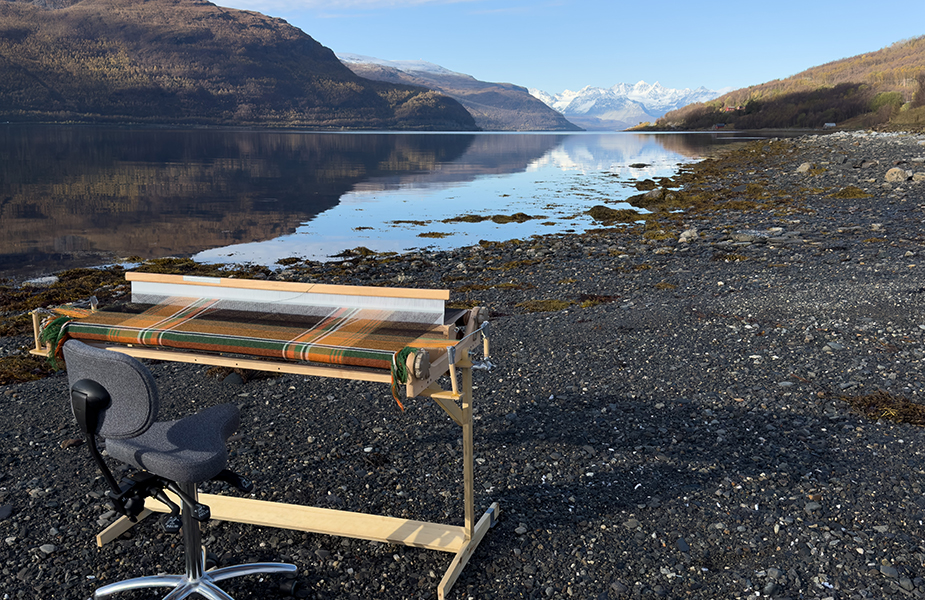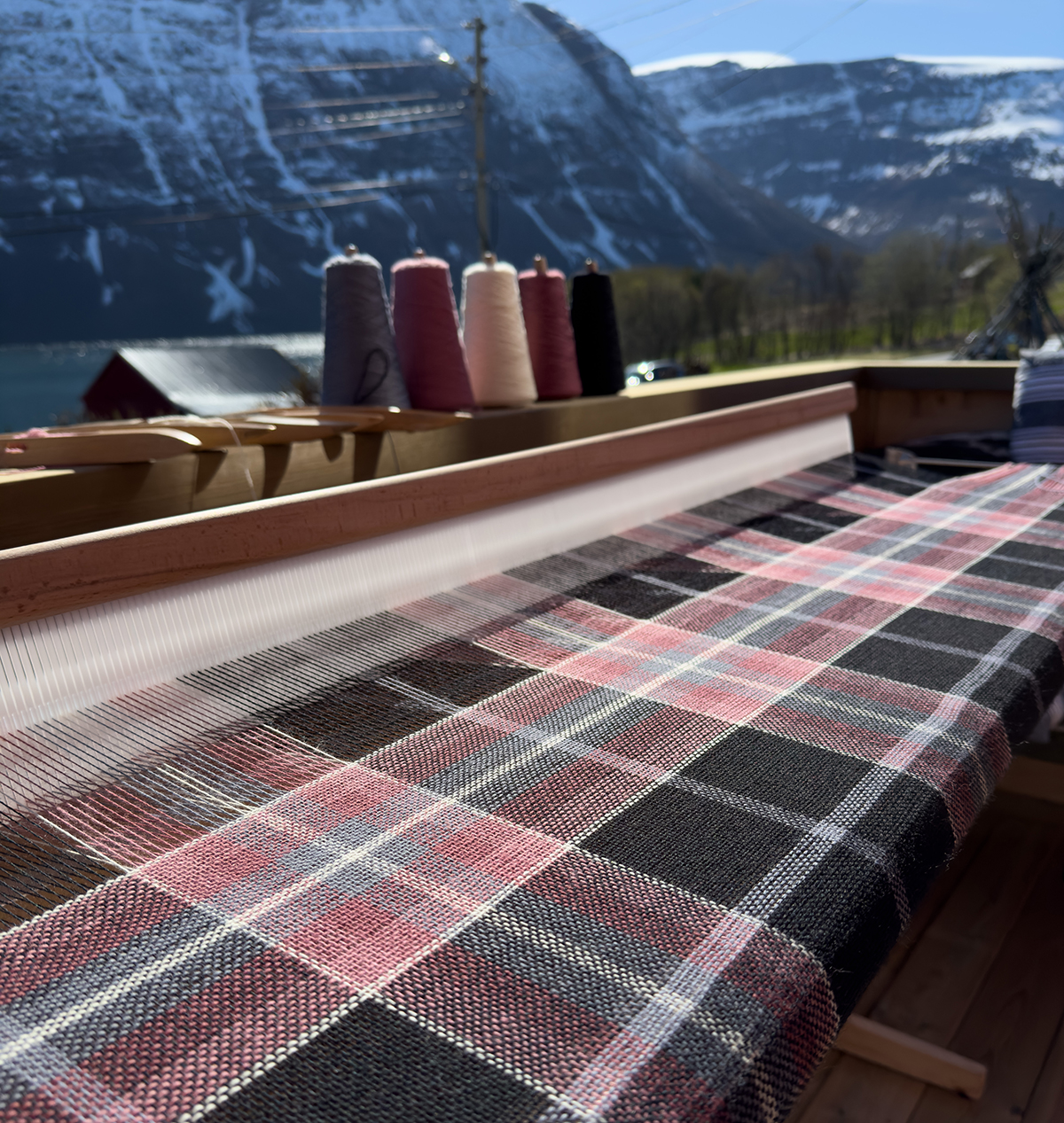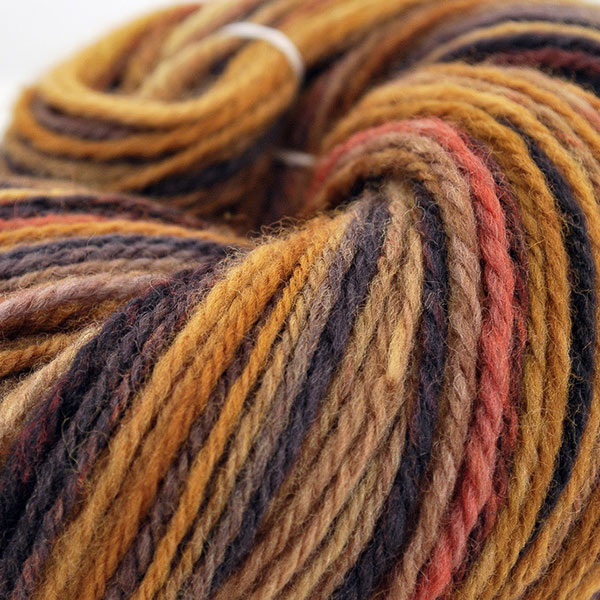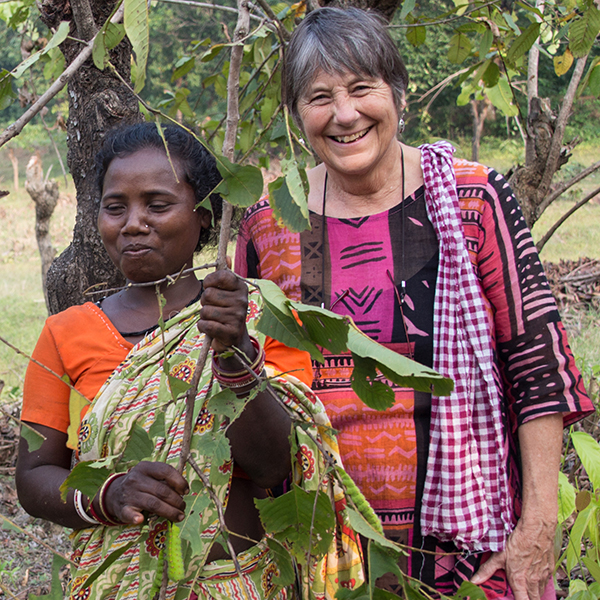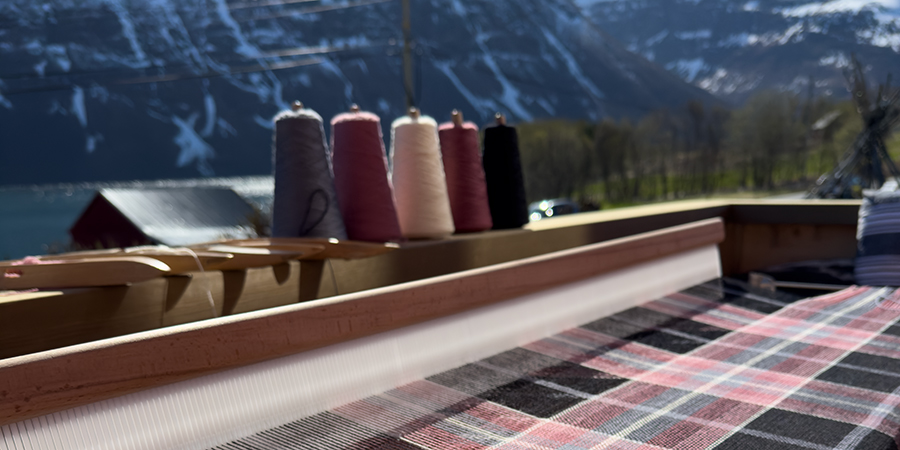
Ashford Artist of the Month – April 25 – Asle Tveitnes
This month’s artist of the month has been working with textiles for more than 60 years! Originally from the Hardanger region of Norway, he re-discovered his passion for weaving about 15 years ago, inspired by the rich textile traditions of his heritage. Now based in the Arctic, he combines his love for the craft with a deep sense of community, generously sharing his expertise and inspiring others along the way. His story is a beautiful reminder of the lifelong pursuit of creativity and connection.
![]()
Kate
NAME: Asle Tveitnes
BUSINESS NAME: Rebelweaver
Where are you from, and what do you do as an artist?
I am an old man from the region of Hardanger in Norway. I found love and moved with my wonderful wife to the arctic in the north of Norway. In the changing light of midnight sun and the northern lights I enjoy friends, family and weaving. My wife is the breadwinner, I make sure we spend it.
What was your background before you started creating fibre art?
I am a classical Jack of all trades. I have worked with everything from meats and sausages to being an officer in the navy. I have been a sheepfarmer, horsebreeder, local politician, guardian and developer of cultural heritage and networks between people from all around the world.
How did your fibre artist journey begin? What inspired you to start?
My fibre art journey started with my godmother who was an artweaver in the traditional textile region of Hardanger. My grandfather made me a simple little loom of my own. So to an extent I have been working with fibres since then, more than 60 years now.
I used to make embroidery for a while, and 15 years ago I took up weaving again. My wife and children have a use for traditional weft products in their indigenous national costumes and in our home. In the Sámi tradition there is still a continuous and vital tradition for weaving and other crafts. In textile production we use heddle looms for making ribbons, belts, but also shawls and bigger products. The ancient warp-weighted loom is also still in use as a flexible and moveable tool for making heavier textiles for interior use and as traditional bedding and decoration. I also use flat looms for lightweight textiles like clothing and home textiles.
How has your creative process evolved over time?
It began with me exploring the heddle loom tradition to make ties for indigenous shoes. A friend made me a weight- warped loom and from there on I started to play. I soon found joy in Ashford looms, both because it released my creativity in an efficient way, but also because it expanded my scope for creative and flexible possibilities. It is also valuable space-efficiency to have more wefts available at the same time. With small looms you can easily change expression and vision for different projects. I strongly feel that when I get inspired, I have to execute my idea as soon as possible. Longer wefts is not as satisfying for me, I get impatient and bored. I currently own and use several heddle looms of various sizes, I have four-, eight- and sixteen- shaft looms and eagerly await my 24 shaft one. I like to have different projects for concentration and relaxation. My 16 shaft loom gives me the possibility to play with variations with less hassle than with my counter-march loom.
What happens to your creations once they’re finished? Do you use, sell, or showcase them in any particular way?
I sell some of it and take some commissions. I gift a lot and keep some of it for myself as inspiration for me and my course participants. There is no mass production, everything I make is one of a kind and an exploration of materials and techniques.
If you sell your work, where can people find it?
I market my goods by word of mouth and relations. It can take a year from people placing an order until I have made it. I no longer stress with deadlines and trying to meet demands. People make contact because they acknowledge that I make quality pieces.
How do you find balance in your life as an artist?
I am very grateful to my hardworking wife for earning our living. We focus on a frugal lifestyle with wealth in community, culture and the luxury of managing our own time. I give courses in weaving. It generates some income, but also new friendships and inspiration. I spend a lot of time with my friendly giant boxer dog Albert and just got my first grandson that lives across the road. I have a big flock of people all over the world that I communicate with, and giving and receiving knowledge and inspiration gives me a lot. I have always enjoyed photography and computers, so being an influencer ticks all the boxes. It is also important to me that this is our universal heritage as human beings. I don`t charge for patterns or tutorials, because it is everybody’s culture.
Where do you draw your inspiration from?
From the powerful arctic nature around me. We experience big changes in light and temperature during the year. I am also blessed with great access to old textiles, both Norwegian, Sámi and from other indigenous peoples. Internet is also a great part of my daily inspiration. I also make accessories for the indigenous clothes; I celebrate new relations and old friends.
What advice would you give to someone just beginning their fibre art journey?
Start with something small so that you get the satisfaction of completing something nice. Work rationally with focus on ergonomics. Remember to play and absorb knowledge from everybody you meet. And make sure you give back. This knowledge is a web of traditions we all share. And the tradition and techniques must be used to be preserved.
What’s next for you? Where do you see your fibre journey taking you in the future?
I hope to work on my elegant little looms for a long time still. I have seen the world, the world has been visiting me and I even got an invitation from the queen and crown princess of Norway to share my art. I hope I can continue to connect with people, both by giving courses and to inspire on my social media channels.

